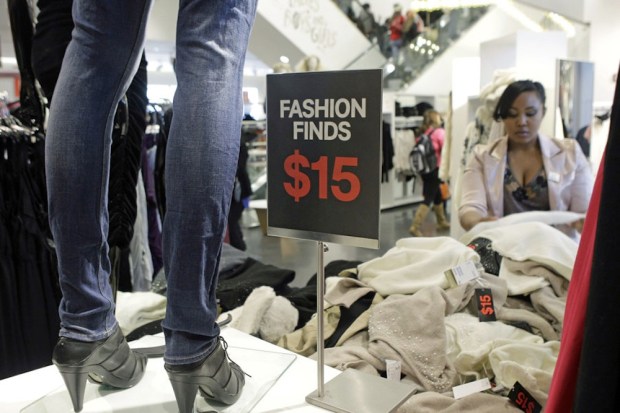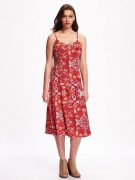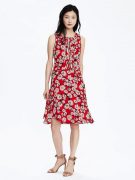Fast Fashion Is Failing – Now What?

On face, the fast fashion concept is backed by two such fundamentally good ideas that it seemed only natural that it would it would become the shape of things to come in clothing retail. A product of its times, fast fashion tapped into its millennial core audience’s two favorite things: saving money and novelty.
The clothing was cheap all the way around – inexpensively made and inexpensively bought. It isn’t the most durable stuff in the world – but durability isn’t such a major consideration when one paid less than $30 for a dress, or less than $5 for a shirt. When whatever it was inevitably wore out – go back and buy a new one.
And as the fast fashionistas of the world pointed out, the business model did a good job of addressing a fairly glaring problematic relationship between pricing and quality that has been plaguing the staple middle market retail chains like J. Crew or Banana Republic of late. Is the clothing at Banana Republic somewhat better made than the stuff on order at Old Navy? Is one always getting a higher quality buy at J.Crew vs H&M?
Decide for yourself:
Those dresses are clearly somewhat different – and the BR version is somewhat nicer. Is it almost $100 nicer than the Old Navy version, though? The shopping patterns of the last few years would indicate that consumers think not.
What the last few retail cycles instead indicate is that consumers quickly noticed that fast fashion chains offered similar styling and similar color patterns to their middle market counterparts for far less money.
What happened next is recent retail history – millennial consumers hit the market and embraced fast fashion en masse so fast and hard that the conclusion of the marketplace was that fast fashion was the wave of the apparel future – and that brands that survived were going to be the ones that learned how to surf.
A natural enough conclusion – but apparel retail is something of a funny animal that is particularly given to trends. Be it the jumpsuits of the 70s, the shoulder pads of the 80s, the Uggs of the early 2000s or the rompers that we assume that many people are soon going to be embarrassed to have worn out in public – all kinds of things have looked like the next big thing in what people were wearing for a year or two – only to be buried in the back of the closets for the rest of time.
Fads are big in fashion – and the only thing that separates an eternal classic from a time-slice obsession is time. The little black dress is a classic because everyone still wants to look like Audrey Hepburn in Breakfast at Tiffany’s, the leisure suit is not because no one wants to look like John Travolta in Saturday Night Fever.
And, for all its popularity and seeming invincibility, fast fashion as we’ve known if for the last several cycles seems more likely than not headed toward the fad side of the history book. The sale figures are in – and they aren’t looking amazing.
So is fast fashion done? Well – maybe we’re being a bit hasty.
“We’re seeing some of our best results ever this summer – I think saying ‘fast fashion’ is done would be a little like saying ‘fast food’ is done. What do we mean by fast food? Is it only burgers, or does fast causal count? I don’t think consumers wanting to look nice and save money is a fad – I think that’s been the direction of apparel retail for at least 40 years,” noted one Gap/Old Navy marketing officer.
“Customers do want their shopping experience to be easy – clothes that get know for being wash and toss – that isn’t a value for anyone, and I think we are seeing a lot options and levels – and so the idea of ‘fast fashions stores’ may be going out of date.”
So, what’s next? Well, first let’s jump back to where things are.
The Problem In Fast Fashion
As Heidi Klum was fond of telling Project Runway contestants for the decade or so the show ran: in fashion, one day you’re in – the next day you’re out.
A clever pun if one is on an elimination reality show- but if you’re in apparel retail, it’s also a pretty apt description of reality.
After escaping the buzz saw effect that ran through retail earnings last quarter, H&M is suddenly looking somewhat less powerful than it has in years past. Despite plans to pursue larger “anchor stores” capable of driving traffic in shopping malls, the chain has seen its sales rise by only 5 percent in the second quarter of this year, despite opening 438 more stores in the past year, according to CNBC.
Forever 21 is also causing some widespread spooking – according to The New York Post, the recently red-hot chain is having trouble paying its bills on time and is backing off the construction of two massive stores in California later this year. And some of its lenders are with holding credit.
“We are unable to get timely financial disclosures from the company,” said Gary Wassner, chief executive of Hilldun, a New York lender in the retail industry that recently pulled its credit lines for Forever 21. “We are approving on an order-by-order basis,” Wassner said.
Lending further line to the tale that Forever21 might be in real trouble – the Wall Street Journal reports that the shipping firm that handled the majority of orders for Forever 21, EZ Worldwide Express, stopped shipping because the retailer’s low-price products weren’t profitable for the company after sales figures dropped by the hundreds of thousands per week recently. EZ Worldwide express filed for Chapter 11 bankruptcy shortly thereafter.
“The trouble we’re seeing is getting to be common in ‘fast fashion,’ and it tells us that perhaps consumers aren’t just looking for as many $5 t-shirts as they can buy?”
So Just What Are Consumers Looking For?
Old Navy this summer has been the outlier in the fast of fast fashion. While other brands are struggling – and certainly its brand-mates The Gap and Banana Republic have continued to stumble – it seems Old Navy has managed to reverse an early year setback. Retail sales were up 5 percent last month – defying analysts who forecasted a 3.5 percent decline.
“I think the basics are always going to be getting products into consumers’ hands that they want and our design team has done a good job of speaking to that. I also think it is going to be about who gives the customers the most choice of where to buy. We’ve seen our online sales take off and our app downloads explode – we’re not trying to fight the digital experience – we’re tying to make sure our customers are having the same experiences wherever they are.”
As for those specific download figures – shockingly, all sources we asked were mute on that subject – though positive on the progress in question.
“We’re seeing earlier back-to-school shopping that ever – and we’re expecting a very busing late summer and early fall. I think our key is we never called ourselves fast fashion. We’ve always been fun fashion and making it easy to look great. We thought it was the future then – we still do now. It would be great if the rest of the market caught up with us.”
Fast fashion as we know it – which focused on buying in bulk and sorting it out later – may have been a fad. But will consumers continue to look for the best look at a low price? Hard to imagine they wouldn’t- even if what they’re looking for is changing.


